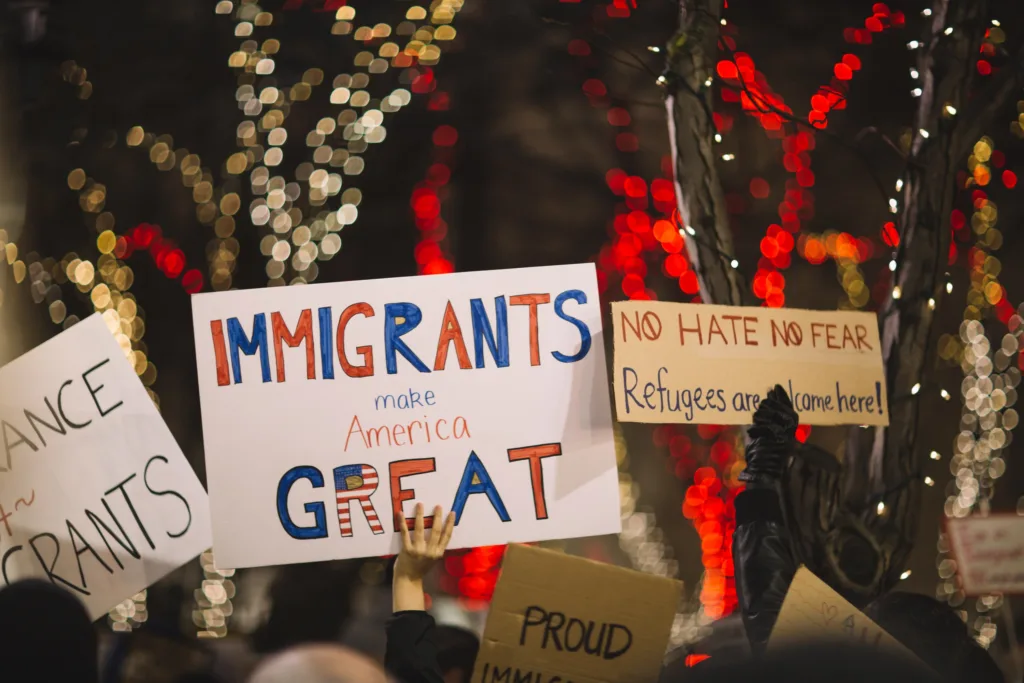Local governments represent an untapped resource in the fight against disinformation about migrants, especially in the cities where the effects are felt.
 Issues around immigration are among the most politicised topics around the world, often manipulated to stoke fear within communities. : Nitish Meena, Unsplash Unsplash licence
Issues around immigration are among the most politicised topics around the world, often manipulated to stoke fear within communities. : Nitish Meena, Unsplash Unsplash licence
Local governments represent an untapped resource in the fight against disinformation about migrants, especially in the cities where the effects are felt.
When it comes to disinformation about migrants, the effects are felt most keenly in communities. So, when it comes to tackling the issue, an effective way forward is head-on — in communities.
A new collaboration between five Australian universities and the US-based German Marshall Fund is researching the unique impacts that disinformation has on cities, including on migration and the ways local governments can respond.
History suggests that disinformation toward migrants and refugees will persist, but collaborative efforts to combat it will be key to the future of thriving multicultural cities.
The project will bring together disinformation experts and local government practitioners from Australasia, Europe and North America to develop the world’s first City Response Playbook for Disinformation, drawing on best practice approaches to address the rising challenge.
Disinformation towards migrants isn’t new, but it’s thriving in the digital age.
The spread of disinformation, and how to address it, is particularly important to cities – the place where most migrants and refugees live.
Disinformation is the deliberate attempt to deceive an audience by sharing false information, as opposed to misinformation, which is shared without the intent to deceive.
Local governments represent an untapped resource in efforts to combat disinformation. As the level of government closest to citizens, local governments excel at building partnerships within their cities and in working collaboratively with other levels of government.
Globally, there has been recognition of the role that local governments can play in promoting positive migrant narratives. For example, the Global Forum on Migration and Development established a working group which included a number of local governments alongside national governments and civil society organisations.
This group established the global ‘It Takes A Community’ campaign, which was highlighted by the UN Secretary-General as a positive example of a campaign to address disinformation toward migrants.
The Secretary-General described local actors as ‘instrumental’ to meeting the goals of the major international framework on migration — the Global Compact for Safe, Orderly and Regular Migration.
Both disinformation and misinformation about migrants is widespread. But disinformation in particular has been utilised by right-wing political groups, media and even national governments, often to scapegoat migrant populations and distract from other issues.
Migration is prone to disinformation as it is a complex phenomenon where facts can be hard to ascertain. Disinformation around migration can also be closely manipulated to tie into everyday concerns like jobs, security as well as religion and cultural identity.
There have been many recent high-profile examples of disinformation toward migrant groups. During the peak of the COVID-19 pandemic, disinformation targeting Asian populations led to discrimination in cities across the globe. Russia’s invasion of Ukraine was also soon met with the spread of disinformation toward Ukrainian refugees, falsely accusing them of committing violent crimes against locals.
As well as sowing community discord, disinformation-fueled xenophobia has also led to violence and terrorism in cities such as the 2019 mosque attacks in Christchurch, New Zealand, the 2020 murder of nine migrants by a right-wing extremist in Hanau, Germany, or targeted attacks on Kurdish people in Paris in 2022.
Widespread concern among member states has led the United Nations General Assembly to adopt several resolutions aimed at combating terrorist threats on the basis of xenophobia and racism.
Online platforms have become the dominant channels for sharing disinformation. Several recent studies of online content have found in particular right-wing groups using social media to share disinformation which characterises refugees as a threat to security, the economy and culture.
A recent EU report attributed declining moderation standards at X, formerly known as Twitter, as contributing to the spread of disinformation from Russia.
While disinformation toward migrants mostly originates online, the outcomes are often felt in cities through protests and racist incidents.
Globally, responsibility for creating safe and inclusive communities and providing support for migrants has increasingly devolved to local governments. However, this rise in responsibilities has rarely been matched with more resourcing for authorities.
The central role that local authorities play in migration governance also means they have a key responsibility in addressing migration disinformation.
Efforts to control the spread and effectiveness of disinformation require the partnership of all levels of government, together with the private sector and civil society.
Regulation of online platforms is a critical piece of this puzzle. The European Commission has a voluntary Code of Practice on Disinformation and some regulatory powers through the Digital Services Act.
The Australian Government has also introduced a voluntary Code of Practice on Disinformation and Misinformation and is exploring new powers for the Australian Communications and Media Authority that would allow it to enforce regulation on digital platforms.
Daniel Pejic is a Research Fellow at the Melbourne Centre for Cities at the University of Melbourne where he leads the City Diplomacy research and education portfolio.
Originally published under Creative Commons by 360info™.
Editors Note: In the story “AI and misinformation” sent at: 11/01/2024 05:00.
This is a corrected repeat.












